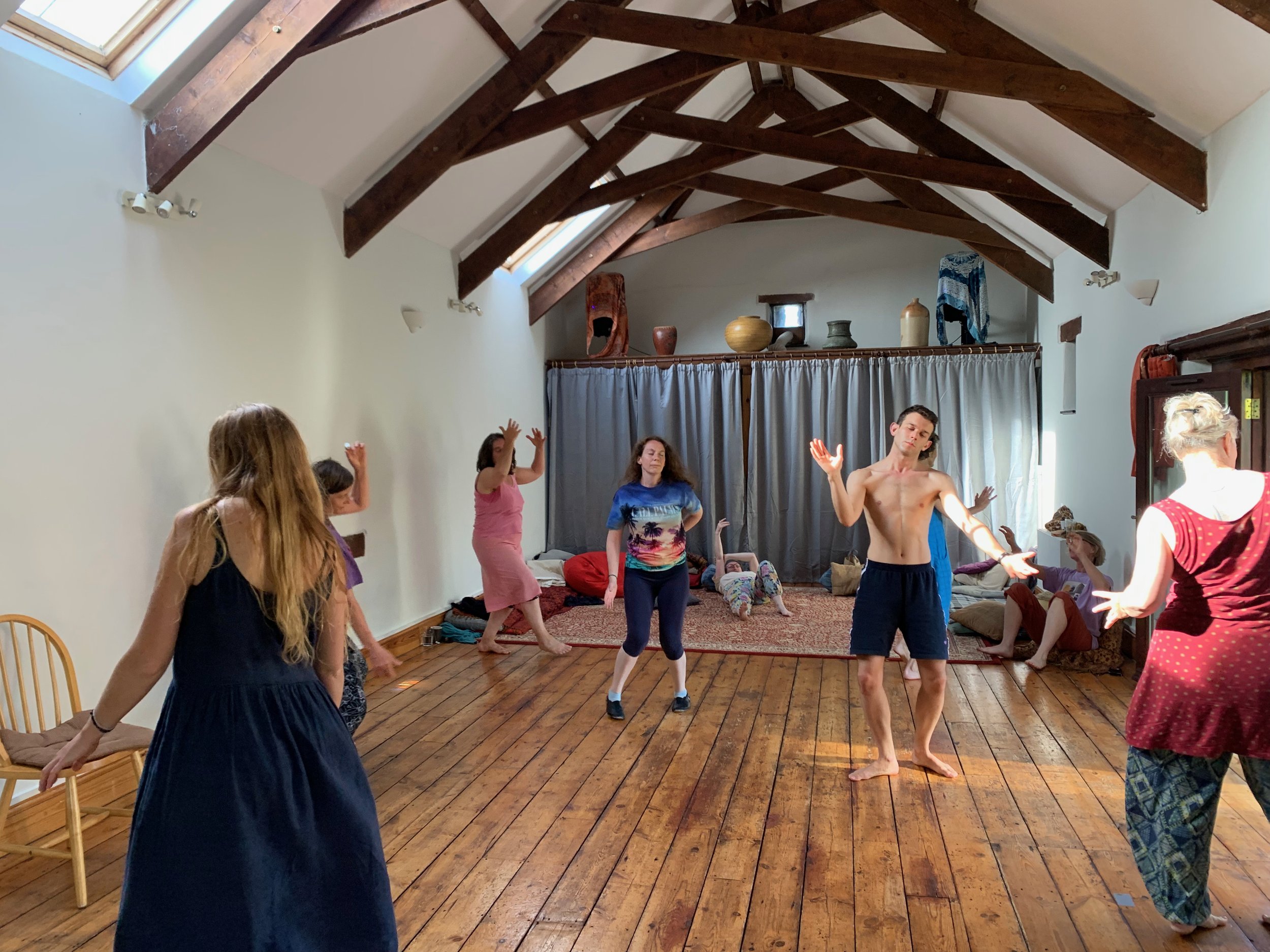What’s movement & dance got to do with NVC?
Conscious dance increases emotional intelligence
I keep discovering new ways in which mindful movement supports the practice of NVC.
Conscious dance increases Emotional Intelligence. Quite simply, as we move, e-motions stir, creativity and intuition awaken and we discover a richer internal landscape to bring into relationship which is more satisfying for everyone.
Many of us have been conditioned to cut off from our emotional world to stay safe but sense that something is missing.
When we move we can feel more alive and bringing this aliveness into conversations helps others feel as well as hear our words - this increases the chances of connection.
“Initially I felt uncomfortable but after a minute I started stretching and began feeling more relaxed and calm.”
Through dance we get more comfortable in our own skin
And therefore become freer to express who we are and more able to tolerate a “No” from others. We feel our power which can help us be bolder in asking for what we want and making things happen in our world.
Bringing awareness to movement helps us regulate our emotions
Some of us are highly reactive, easily angered, fearful or disorientated by the words and behaviour of others. All of us have brains that are biologically programmed to react disproportionately to the common forms of stress we encounter every day.
Bringing awareness to movement helps us regulate our emotions: we learn to use the body to ground and centre when we’re under attack, so we can choose how we respond in challenging conversations.
What is Open Floor Movement Practice?
This is dance, but probably not as you know it... no steps to learn, no way to do it wrong. There are all kinds of music genres, tempos & rhythms to move to, from gentle to lively. You dance alone and with others if you want to.
It’s a form of conscious dance, in the sense that as you move, you are encouraged and guided to be aware of thoughts, habitual patterns, feelings, desires, your breath and body sensations.
It is meditation in movement, with music designed to support you to be more deeply present to your experience moment by moment.
For more information visit Open Floor
“Before the first dance session I felt quite stressed and fearful as I’d never done this type of movement practice before. I closed my eyes and started to feel my body, every part of it. The deeper we went into dance the more connected I felt with myself. The more connected I felt with myself the closer I felt to the group. I loved the energy we all created there. It was the atmosphere of acceptance, joy and calmness. It was such a precious and powerful experience.”
How is dance included in my NVC trainings?
In some of my intermediate trainings and in all residential workshops I include a session of Open Floor Movement Practice with exercises and core movement resources designed to embody particular NVC practices and consciousness. For example, we might practise approaching someone to partner us on the dance floor as a way of making a request. The vulnerability and boldness of requesting is experienced viscerally, which helps when it comes to making a request in words.
The core movement resources we work with include Grounding, Centring, Activate & Settle, Expand & Contract, Towards & Away, Pause, Release, Dissolve, Vector, Spacial Awareness.
Is this for you?
Every body is welcome, whatever your experience, body shape, gender, movement ability, age.
What to wear?
Loose, comfortable clothes, soft dance shoes or bare feet, trainers are also possible.
Who’s teaching?
Cath Burke is an Open Floor Movement Practice Teacher and has been dancing various forms of conscious dance, especially 5 Rhythms, since 2005. She is also a member of the International Conscious Movement Teachers Association ( IMCTA ) and a Certified Trainer in Nonviolent Communication.
Get to know a bit more about Cath and what inspires her to dance. Podcast by International Conscious Movement Teachers Association (ICMTA) July 2023
“Using movement in dance helped me to connect to someone when words felt inadequate. It gave me the opportunity to empathise and feel compassion towards him without the pressure of getting it wrong.”
Guidelines for first timers
1. There are no steps to follow.
2. On the Open Floor we shift from speaking with words to speaking with movement. It makes for very creative conversations.
3. If you have no idea what to do, try something below:
Stay As with any meditation practice, distractions happen – expect them. Just gently bring your attention back to movement.
Pace yourself No matter what the rest of the room is doing, listen to your body. If you relax in the beat, like a swimmer treading water, you’ll refuel.
Stretch yourself If you always keep to yourself, include someone else in your dance. If you prefer dancing with a partner, try going solo. Slow down. Speed up. Experiment. Break a habit. Imitate somebody and see how it feels.
It’s not about the music The teacher uses music to catalyse movement. Love it or hate it, how you respond is up to you. Use everything as fuel for your dance.
Don’t give up We all hit patches of fatigue, boredom, shyness, frustration, or discomfort. Even if you can only wiggle a finger or nod your head to the beat, stay with it until something changes. Most often, it will.
Enjoy yourself Excessive seriousness will slow you down.







